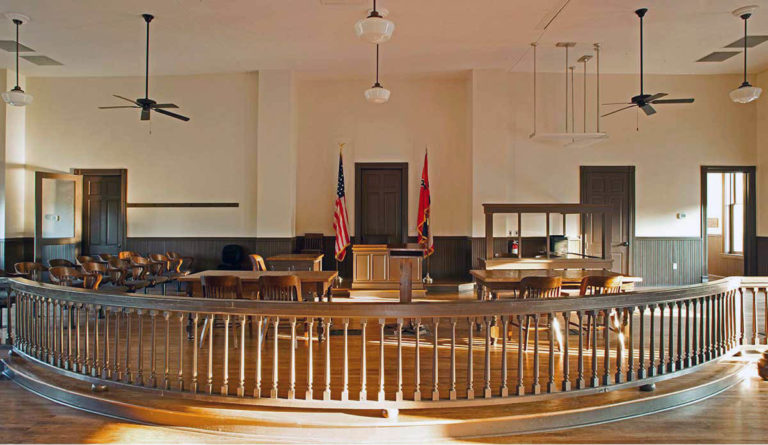Racial Reconciliation: Lessons from Sumner, MS
How do we deal with our complicated racial past and present? David Jones reflects on his experience visiting the Emmett Till Interpretative Center.

Read Time: 6 minutes
Published:
Black lives matter. Blue lives matter. You will not replace us. Ferguson. Baltimore. Charlottesville.
Former Vice-President Joe Biden recently wrote that the United States is engaged in a battle over its soul. A major part of this national soul-searching requires reconciling disparities and tensions driven by race. A non-profit organization in Sumner, Mississippi is starting this important conversation in Tallahatchie County. Its experience has profound lessons for the rest of the country.
It has been more than 60 years since Emmett Till was brutally murdered for allegedly whistling at a white woman and since his killers were acquitted by a jury of their peers. How does a community recover from such trauma? By talking about the past, present, and future respectfully and honestly. The Emmett Till Interpretative Center is leading the way, facilitating dialogue about the county’s complicated and violent racial history.
In 2007, a group of local leaders came together, feeling that the community could never move forward until it dealt with the shame, anger, and resentment of this incident—the countless quieter injustices. A committee was formed which drafted a formal apology letter to the Till family. Money was raised to restore the Sumner Courthouse to how it looked in 1955 during the trial of Till’s murders. The renovated building stands as a symbol of the community’s attempt to have an honest conversation about what happened there and what it means today. There is still a statue out front honoring confederate soldiers, serving as a reminder of the deeper legacy of racial turmoil pre-dating Emmett Till.

Not everyone in Tallahatchie County wants to have this conversation. Some feel that it is impossible to move forward if we keep talking about the past. Some are nervous about any particular group taking the lead in defining what happened and what it means. Others whitewash this history (pun intended), saying it wasn’t as bad as people say.
The first time I visited Sumner I met a white man in his 90s. Our quick sidewalk encounter across the street turned into a ten-minute conversation as he told me his life story. I realized that he would have been about my age at the time of the Till murder and trial. I asked what that was like for him and his children. Without hesitation he gave an answer that diminished the history of white dominance, saying that “there was plenty of killing in the other direction too, you know.”
Shortly after that encounter I visited the Interpretative Center for a guided tour of the courthouse. Ben Saulsberry, an African-American musician from Tallahatchie County working at the Center, led me and two white doctoral students on a conversation about our own experiences with race. This is the same bold approach the Center takes with school field trips and other groups. The ground rules were that everyone’s experience is valid and no one is allowed to try to fix or correct what is shared by someone else. It was incredibly moving to sit at the lawyer’s table in the court room, a couple feet from the jury box, and open up about such a difficult topic.
The next time I was in the area I drove around Tallahatchie County with Patrick Weems, a white man who helped found the Center. He took me through the back roads to the places important to the Till story, such as the remains of the store in Money, MS where the 14 year old Emmett Till interacted with the white shopkeeper’s wife and the banks where his body was removed from the Tallahatchie River. Most of the signs marking these sites were peppered with bullet holes and one was defaced to the point that it had to be removed.


Patrick and I were accompanied by an African-American teenager from the area and an African-American filmmaker who is a doctoral student in Florida. They were part of a workshop facilitated by the Center in which local youth were paired up and given iPhones for a week with the assignment of creating a photo-documentary about their experience growing up in Tallahatchie County.
Signs of Emmett Till, a photo story by Kenyata Beller and Devin Leach
from Barefoot Workshops
The workshop culminated with a public event held inside the Sumner Courthouse in which five teams of teenagers showed their three-minute video of pictures and narration. Weems told me that “We chose the photography workshop because we understand the role art can play in helping us process past racial division, but also its ability to help our young people imagine a new way for moving forward.” Of the nearly dozen youth involved, only one was white. Weems said that they tried to have more balance but the parents of most white teens said no, either because of busy schedules or because they weren’t comfortable.
The product of the one interracial pairing was particularly eye-opening, with the black young man saying that this was the first time in his life that he had really had a conversation with a white person. The white young woman reflected that although they lived in the same small community, they lived in different worlds. She goes to a predominately white private school outside Sumner while he goes to the predominately black public school in town.
Bridging The Gap, a photo story by Sophia Maude McMullen Clay
from Barefoot Workshops
Racial reconciliation is an important end in and of itself, but is also an important part of the process of achieving health equity. The Center works with academic partners to help facilitate research on health in Tallahatchie County. For example, a team from the University of Michigan School of Public Health worked with the Center to examine food insecurity in Tallahatchie County.
The Emmett Till Interpretative Center serves as a model for how the nation should address its complicated racial history and present. Race needs to be talked about and not pushed under the rug. The conversation needs to be respectful and patient—but it also has to be honest. I wish we could have this conversation on a national level but I don’t think our country’s leaders are willing or capable. This is a national crisis requiring local leaders to step up in their communities.
Feature image courtesy of the Emmett Till Interpretive Center. Images taken by author. The other Sumner youth photodocumentary videos are available here, here, and here.



